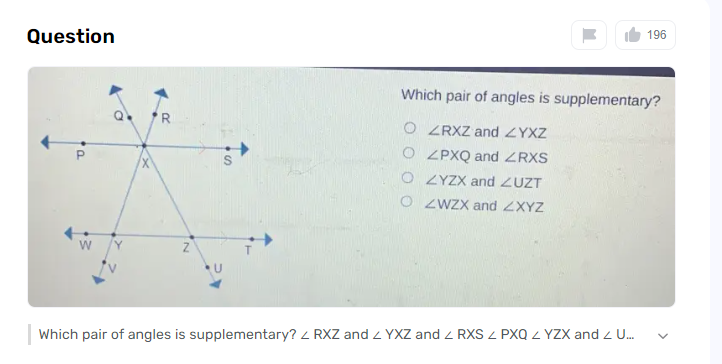Understanding supplementary points is a significant idea in the calculation. Strengthening points are two points whose actions amount to the Supplementary angle. This indicates that the sum of the measures of two additional angles will always equal the Supplementary angle when they are added together.
The concept of additional angles is an essential idea to comprehend. Strengthening points are two points that amount to the Supplementary angle when put neighboring one another. When solving problems in geometry or working with angles in a practical setting, knowing which pair of angles is supplementary? ∠rxz and ∠yxz ∠pxq and ∠rxs ∠yzx and ∠uzt ∠wzx and ∠xyz is very essential so that you can solve further problems.
What Is Meant by Pair Angles Is Supplementary?
We mean that the two angles add up to a total of Supplementary angles when we say that a pair of angles is supplementary. To put it another way, if you have two complementary angles, when you add them up, you get a straight line. This is on the grounds that a straight line estimates the Supplementary angle.
For instance, on the off chance that one point estimates 100 degrees, the other point in the pair should gauge 80 degrees for them to be advantageous. The total angle is the Supplementary angle when you add the two angles. In geometry, knowing about supplementary angles is important because it lets us see how different angles in a figure relate to one another.
Finding Which Pair Angles Is Supplementary
Remember to add all of the additional angles to see if they equal the Supplementary angle when looking for them. They are supplementary if they do.
Definition of Supplementary Angles
A pair of supplementary angles have measurements that add up to the Supplementary angle. To put it another way, the result is a Supplementary angle when the measure of one angle is added to the measure of the other angle. This indicates that when combined, the two angles form a straight line. Supplementary angles can be adjacent (with a vertex and side in common) or non-adjacent (without a vertex or side in common).
Identification in Geometric Figures
Initially, determining additional angles in geometric figures can be challenging. Look for angles in pairs that add up to the Supplementary angle. Supplementary angles are the name given to these angles. They can be nearby, meaning they share a typical vertex and side, or they can be inverse one another. To determine which pair is supplementary, pay close attention to the angles’ positions and measurements.
Verification Methods
In order to determine which pair of angles is supplementary, verification methods are essential. Adding the two angles together to see if they equal the Supplementary angle, the definition of supplementary angles—is a common approach. An additional approach is to search for angle pairs that are supplementary and form a straight line.
Real-World Applications
In a variety of real-world scenarios, supplemental angles are crucial. To ensure that buildings have adequate support and stability, architects make use of their knowledge of supplementary angles. Engineers depend on beneficial points while planning designs like scaffolds and streets. This idea is also used by carpenters when cutting materials for construction projects.
Using Gauth For Finding Pair Angles
Here are the steps to find pair angles that are supplemented using Gauth:

Step 1: Visit Gauth
Use a mobile app or your web browser to access the Gauth platform. Upon entering, you will find a user-friendly interface designed to assist with a wide range of academic inquiries and issues, such as those pertaining to locating pair angles in geometric contexts.
Step 2: Enter Question
After logging in to Gauth, enter your specific question about pair angles. This could include questions connected with reciprocal points, beneficial points, vertical points, or some other mathematical connections between points that you want help with.
Step 3: Find Free Trial
Use the choice to choose a free preliminary if accessible, permitting you to investigate the stage’s capacities and get an answer for your point-related question without focusing on membership or installment forthright.
Step 4: Get Solution
Gauth will process your inquiry using its computational and mathematical algorithms to provide a comprehensive answer after you submit it. To ensure clarity and comprehension, this solution typically includes calculations and explanations for each step.
Step 5: Preview And Copy
On the platform, you can see a preview of the generated solution. In order for you to effectively comprehend the ideas behind finding pair angles, the solution frequently includes diagrams and in-depth reasoning. The answer can then be copied for future reference or study, ensuring that you always have access to the data.
Conclusion
Understanding that supplementary angles add up to the Supplementary angle is all that is needed to find a pair of angles that are supplementary. You can quickly and easily identify which pairs of angles are supplementary by applying this straightforward concept and locating angles that either form a straight line or are adjacent.
